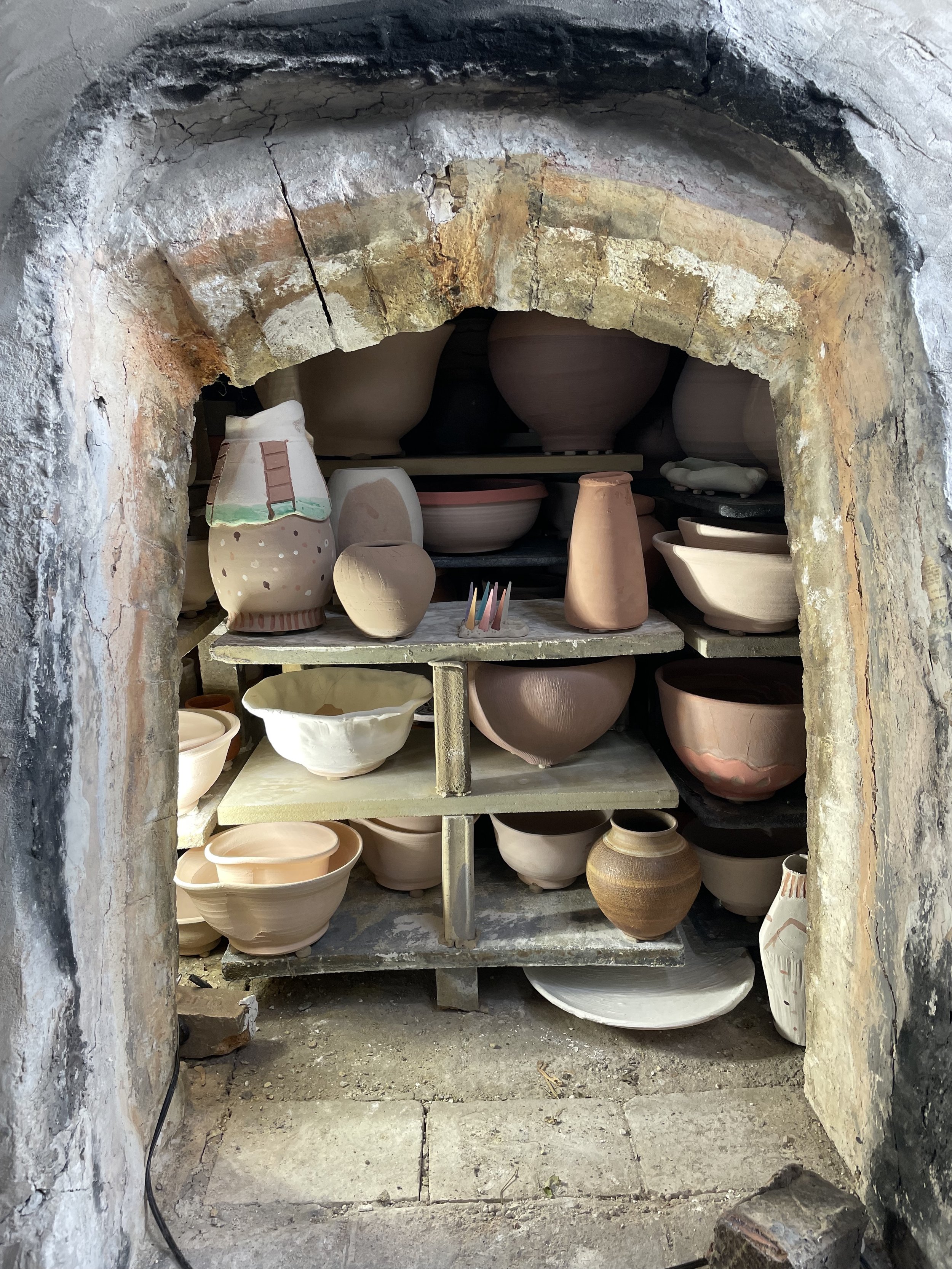Woodfiring Process
Woodfiring is a traditional method of firing pottery or ceramics using wood as the primary fuel source. It's a process that involves heating the pottery in a kiln (a type of oven) to very high temperatures, typically around 1,000 to 1,400 degrees Celsius (1,800 to 2,550 degrees Fahrenheit), using wood as fuel instead of natural gas or electricity.
Glencoe Ceramics built and operates a Japanese Anagama kiln named Tandava, which translates to “dance of fire”. Its firing is a natural process with random, accidental effects. Each wood firing is a communal activity. We cut wood, stack it, and load pots into the kiln. We take shifts during the firing, which lasts three days and two nights. Flames beat music onto the pots. Every pot is a poem, a song. Our pots are a dance of fire.
Here’s a step by step look into the process of woodfiring:
1. Preparation: The pottery pieces are made by hand or on a potter's wheel using clay. Once they're shaped, they are left to dry until they reach a certain consistency known as "leather-hard." This makes them sturdy enough to withstand the firing process. We also prepare for a firing by cutting and stacking wood, grinding shelves, and preparing wadding for the bottom of the pots.
2. Loading the Kiln: The dried pottery pieces are arranged inside the kiln, often with careful consideration given to their placement to ensure even firing and to take advantage of specific areas within the kiln that may offer unique effects.
3. Temperature Climbing: The temperature inside the kiln is gradually increased over a period of many hours. This slow heating allows the clay to fully mature and any remaining moisture to evaporate without causing the pottery to crack or break.
4. Sustaining High Temperatures: Once the kiln reaches peak temperature, the firing is sustained for a certain amount of time to ensure that the pottery is properly vitrified (turned into a glass-like substance) and any glazes applied to the surface melt and fuse with the clay.
5. Cooling: After the firing is complete, the kiln is allowed to cool slowly over several days. Rapid cooling can cause the pottery to crack due to thermal shock, so this cooling process is typically slow and controlled.
The pots cool in the kiln for a week and this is what it looks like when we unload…magic!











